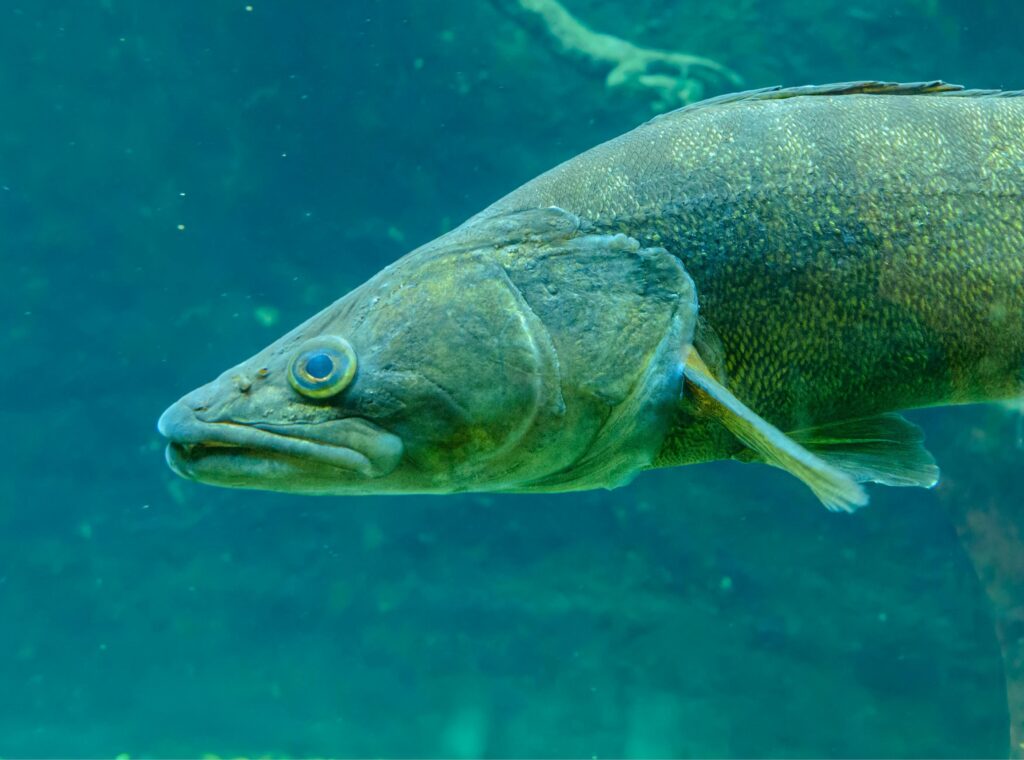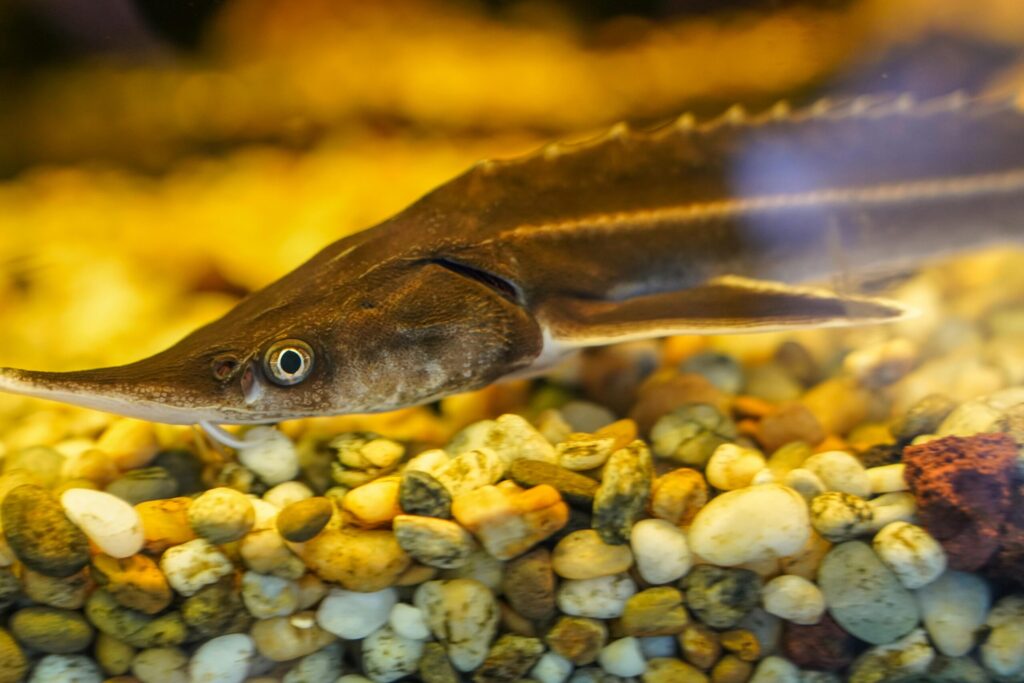Have you ever wondered what the biggest fish in Lake Erie is?
Here we list the top 6 biggest fish in Lake Erie that anglers like to target!
What Are the Biggest Fish in Lake Erie?
Lake Erie is home to several large fish species, many of which are sought after by both sport and commercial fishers. But what exactly defines “the biggest fish”? In this article, we refer to the biggest fish that roam the waters of Lake Erie. The most commonly known large fish species in Lake Erie include lake sturgeon, muskellunge, steelhead trout, walleye, channel catfish, and smallmouth bass.
Here’s a quick look at some of the record-breaking catches for these species in Lake Erie:
| Fish Species | Average Size | Record Catch |
|---|---|---|
| Lake Sturgeon | 4-6 feet, 50-150 lbs | 216 lbs |
| Muskellunge | 20-40 lbs | 55 lbs |
| Steelhead Trout | 3-15 lbs | 21 lbs |
| Walleye | 3-10 lbs | 16 lbs |
| Channel Catfish | 10-20 lbs | 37 lbs |
| Smallmouth Bass | 2-7 lbs | 9.5 lbs |
These record giants are a sign of a healthy ecosystem and fishery. The fishery is managed correctly making these records obtainable, even today.
Why Are There Big Fish in Lake Erie?
The size of the fish in Lake Erie is a direct result of the lake’s unique ecosystem, favorable conditions, and careful conservation efforts. Several factors contribute to the impressive size of fish in the lake:
- Ecosystem Health: Lake Erie offers abundant food sources, such as baitfish, crustaceans, and other prey, which helps fish grow large.
- Geographical Features: The size and depth of Lake Erie provide vast habitats for fish, especially larger predatory species.
- Water Quality and Temperature: The relatively cool water temperatures of Lake Erie are optimal for several large fish species, such as trout and walleye.
- Conservation Efforts: Stocking programs and protective fishing regulations have contributed to the resurgence of large fish, like lake sturgeon, which were once nearly extinct in the region.
The Biggest Fish in Lake Erie Listed
1. Lake Sturgeon
Lake sturgeon are the largest fish in Lake Erie by a considerable margin. These ancient fish, often referred to as “living fossils,” can grow up to 7 feet in length and weigh over 300 pounds. They have long lifespans, sometimes reaching over 100 years, and their slow growth rate is one of the reasons they can achieve such impressive sizes.
Where to Find Lake Sturgeon
- Commonly found in the deeper, central basin of Lake Erie.
- Known to inhabit areas near river mouths and tributaries where they can spawn.
- The Maumee River has been known to have habitat supporting Lake Sturgeon. They have been caught by anglers recently.
Conservation Status
Lake sturgeon are considered endangered in many parts of their native range, including the Great Lakes. Conservation efforts include restocking programs and restrictions on fishing. The ODNR has recently started stocking juvenile Lake Sturgeon as part of an ongoing effort.
Interesting Fact
A lake sturgeon caught in Lake Erie in 1929 weighed a staggering 216 pounds, setting a record that still stands today.
2. Muskellunge (Muskie)
The muskellunge, often called “muskie,” is one of the largest predator fish in Lake Erie. Known for their elongated bodies and sharp teeth, muskies are powerful fighters, making them a prized catch for anglers. They can grow over 50 inches long and weigh more than 50 pounds. There are different strains of muskie in Lake Erie.
Where to Catch Muskie in Lake Erie
- Muskie are commonly found in the Western Basin, where there’s abundant vegetation and prey.
- They prefer shallow waters with deep water close by, especially during the summer months.
Fishing Techniques
- Trolling with large lures mimicking baitfish is the most effective method for targeting muskies.
- Casting in weedy areas is another productive approach, especially in early fall.
3. Steelhead Trout
Steelhead trout are a migratory form of rainbow trout and are known for their impressive size and acrobatic jumps. In Lake Erie, they are primarily found in the tributaries during their spawning runs but also live in the deeper waters of the lake itself during the hot summer months.
Best Fishing Spots
- Steelhead are often found in Lake Erie’s tributaries, especially during the fall and spring.
- Top tributaries: Cattaraugus Creek, Grand River, and Elk Creek.
- In the summer, steelhead can be found chasing bait in the deep basins offshore.
Steelhead Size
Steelhead in Lake Erie typically weigh between 5 and 15 pounds, but it’s not uncommon to catch fish over 20 pounds during peak runs.
4. Walleye
Walleye are some of the most sought-after fish in Lake Erie due to their delicious flavor and impressive size. As one of the largest species in the lake, walleye can grow up to 22 pounds in other systems, although most anglers catch them in the 3-10 pound range. Ice fishing for walleye is popular on Lake Erie.
Best Locations for Trophy Walleye
- The Western Basin of Lake Erie is famous for its trophy walleye population. Known as the “walleye capital of the world.”
- Large walleye are also found in deeper waters during the summer, particularly in the Central and Eastern Basins.
- In the spring, walleye congregate in rivers and on the shallow reefs in the western basin to spawn. Jigging for walleye is popular then.
Fishing Methods
- Trolling with crankbaits or crawler harnesses is a highly effective way to catch large walleye.
- Jigging in deeper waters is another popular technique, especially in colder months.

5. Channel Catfish
Channel catfish are abundant in Lake Erie and can reach significant sizes, making them a favorite among anglers. These bottom-feeding fish are known for their powerful fight and are often caught using simple bait techniques. Sandusky Bay is a great place to catch Lake Erie catfish in the spring and summertime.
Record Catfish Catches
The largest channel catfish caught in Lake Erie weighed an impressive 37 pounds, making it one of the biggest fish species in the lake.
Where to Catch Big Catfish
- Western Basin: Channel catfish are frequently caught in the shallow, warm waters of the western end of the lake.
- Near river mouths: Catfish are often found near the mouths of rivers and streams where food is plentiful.
Best Baits
- Chicken liver, stink baits, and cut bait are among the most popular choices for targeting large catfish.
- Lake Erie catfish have been known to like shrimp.
6. Smallmouth Bass
Smallmouth bass are considered one of the hardest-fighting fish in Lake Erie, and their size often surprises anglers. Though not as large as sturgeon or walleye, smallmouth bass can grow large in the Great Lakes, making them one of the largest bass species in freshwater.
Where to Find Big Smallmouth Bass
- The Eastern Basin of Lake Erie, with its rocky structure, is ideal for large smallmouth bass.
- They are also common near offshore reefs and submerged rock piles.
- Breakwalls hold smallmouth in the spring and fall
- The “bass islands” are a great place to look for smallmouth bass.
Fishing Tips
- Drop-shotting and tube jigs are effective for catching smallmouth bass in deep water.
- Early summer and late fall are the best seasons for trophy-sized bass.
Factors Affecting Fish Growth in Lake Erie
Several factors contribute to the size and health of fish populations in Lake Erie, including:
- Water Temperature: Warmer water in the shallow basins leads to faster fish growth, while cooler deep water offers prime conditions for larger, cold-water species.
- Food Availability: Plentiful baitfish, such as alewives and smelt, provide the necessary food source for large predatory species like walleye and muskie.
- Fishing Pressure: Overfishing can reduce the size and population of large fish, but catch-and-release practices help maintain healthy numbers.
- Habitat Quality: Rocky reefs, submerged vegetation, and clean water are essential for the survival and growth of Lake Erie’s biggest fish.
Best Times to Catch the Biggest Fish in Lake Erie
The time of year can greatly influence your success in landing Lake Erie’s biggest fish:
- Spring: A great time for targeting walleye, as they move into shallower water to spawn.
- Summer: The best time for muskie and smallmouth bass, especially in the warmer Western Basin.
- Fall: Steelhead trout begin their spawning runs, making tributaries prime spots for large catches.
- Winter: Ice fishing for walleye is highly popular, with many large fish caught through the ice.
Are you ready to catch big fish? Hopefully, this article helped you better understand the biggest fish in Lake Erie and how to catch them.

